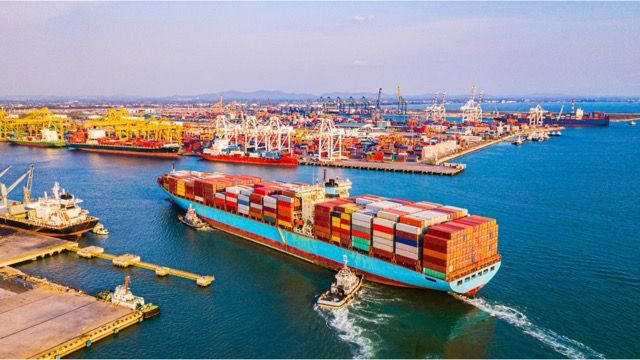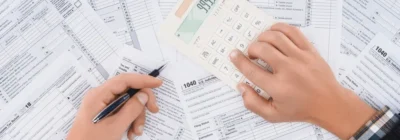Exports: Key to Economic Growth in Spain
Patrick Gordinne Perez2024-12-24T21:25:32+00:00Exports are the shipment of goods and services to other countries.
Its role is fundamental in international trade and directly affects a nation’s economy.
This article discusses the importance of exports, their impact on the trade balance and GDP, as well as strategies for their effective implementation.
In addition, the challenges faced by exporters will be analysed.
What if I start exporting?
Export
In the current crisis situation you are looking for ways to increase your business volume.
Well, consider the possibility of exporting, as it allows you to diversify your business risk (opening up to new markets) and improve the global competitiveness of your company.
To this end, the Chambers of Commerce offer a programme aimed at SMEs that will help them to take the first steps in this field.
This programme, which consists of personalised advice to help small companies internationalise their business, lasts 80 hours:
- It has a first phase – at no cost to the company – which includes both strategic guidance to select and access the target market and the development of a marketing and business plan.
- The second phase of development of the plan and its financing is co-financed by the European Regional Development Fund (ERDF), which offers grants for programme expenses of up to a maximum of 9,000 euros per company.
Take advantage of the aid for advice and design of an internationalisation plan offered by the Chambers of Commerce.
But before we get into it, let’s start with the basics.
What does export mean?
Concept of Exports
Exports are a key activity in the international trade environment.
Understanding their significance and relevance is fundamental to appreciating their impact on national and global economies.
What are Exports?
Exports are defined as the process by which one country sends goods or services to another country.
This exchange is a manifestation of foreign trade, where nations seek to maximise resources and satisfy external demands.
Sending products abroad includes both raw materials and manufactured goods, as well as financial, technological and cultural services.
This phenomenon not only contributes to the economy of the exporting country, but also creates connections between markets globally.
Importance of Foreign Trade
Foreign trade is an essential engine for economic growth.
It facilitates the earning of foreign exchange, enabling countries to purchase products and services that may not be available locally.
It also encourages the opening of markets, improves competitiveness and promotes innovation, as companies must adapt to the demands of the international market.
Through foreign trade, nations can also diversify their sources of income, reducing their dependence on domestic demand.
Exports and Imports
Exports and imports are two sides of the same coin in international trade.
While exports represent the outflow of goods and services, imports are the inflow of goods from abroad.
The trade balance, which is calculated as the difference between the two, is a crucial indicator of a country’s economic health.
A positive balance indicates that exports exceed imports, which is generally considered a sign of economic strength.
Exports of Goods and Services
Exports can be classified into goods and services.
The export of goods includes all kinds of products, such as food, machinery, technology and manufactured goods.
On the other hand, the export of services encompasses intangible activities, such as consulting, education, tourism and financial services.
Both types of exports are essential to a country’s economy and may have different requirements and regulations depending on the target market.
Clear, isn’t it?
Is your company ready to export?
As we have seen, exports are very important for a country and a profitable business,
You have a good product, but at this time of economic contraction your sales are suffering, so you are considering exporting to other markets.
And at this point you are wondering whether your company is ready to take this step.
Well, the Ministry of Industry, Trade and Tourism has developed a tool designed to carry out a self-diagnosis of access to new markets:
- To help SMEs to know what their situation is with a view to opening up to foreign markets, to know what is involved and what to expect.
- To provide information on the typical profiles of Spanish SMEs abroad and the good practices they are carrying out so that you can take your first steps.
With the new market access self-diagnosis tool you will know if you are ready to export.
Export-related issue

What are the Incoterms clauses of international trade?
Patrick Gordinne Perez2024-12-24T21:21:32+00:00Incoterms (International Commercial Terms) are a set of rules created by the International Chamber of...
Export Strategies
Export strategies are crucial to ensure that companies can access international markets effectively.
Through a structured approach, organisations can maximise their potential in foreign trade.
Internationalisation Strategy
Internationalisation strategy refers to the process by which a company expands into markets beyond its home country.
This process involves several stages and must be adapted to the nature and capabilities of each company.
A good internationalisation strategy includes:
- Market analysis: Assessing the demand for products or services in foreign markets.
- Barriers to entry research: Understand local and cultural regulations that could affect market entry.
- Developing a specific business plan: Create a detailed plan that defines export objectives and the resources needed to achieve them.
Export Market Selection
The selection of export markets is a critical step that determines the success or failure of the international strategy.
Factors to be considered include:
- Demographics: Identify markets with a population that fits the profile of the target consumer.
- Political and economic stability: Analyse the market environment and policies that could influence business operations.
- Competition: Assess the presence of competitors and their position in the market.
Advantages and Disadvantages of Different Strategies
Each export strategy has its benefits and disadvantages.
It is essential for companies to assess which approach is best for them:
- Indirect exporting:
- Advantages of indirect exporting: Low investment and reduced risk by using intermediaries.
- Disadvantages of indirect export: Less control over marketing and distribution.
- Direct export:
- Advantages of direct export Greater control over marketing and direct customer relationship. Can result in higher profit margins.
- Disadvantages of direct exporting Requires more resources and experience in foreign markets.
Internationalisation of companies
The process of internationalisation of companies is complex and varied.
It involves not only the export of products, but also the adaptation of business strategy to a global context.
To carry out this process successfully, companies need to:
- Build teams with international experience that can handle the complexities of the global marketplace.
- Implement technologies that facilitate global communication and operation.
- Establish strong relationships with local partners who understand the target market.
Internationalisation should be seen as a long-term investment in the sustainable growth of the company, and not simply as a tactic to increase short-term sales.
How do I finance my exports?
You have decided to export and need financing to cover the initial costs.
The Ministry of Industry, Trade and Tourism promotes various projects and financing systems to support the internationalisation of companies, and there are various programmes specifically designed for SMEs:
FIEM
This is a fund that finances export and investment operations abroad, with a simulator that allows you to calculate the cost of the financing you intend to apply for.
COFIDES
The Compañía Española de Financiación del Desarrollo has the Pyme-Invierte programme , which provides financing of between 75,000 and 10 million euros and whose loans can reach 80% of the project, with a repayment period of up to eight years and grace periods of up to three years.
Other
You can also apply for the services of CESCE (a commercial credit management company) or CARI (an interest rate risk insurance scheme).
How to choose financing
On the Ministry’s website you will find a form that, once filled in, will indicate the type of service that best suits your needs.
You can access this form by clicking on the following link: https://comercio.gob.es/Financiacion_para_internacionalizacion.
Find on the website of the Ministry of Industry, Trade and Tourism the support services for the export and internationalisation of companies.
Will I be charged tariffs on my exports?
If you are selling your products to countries outside the European Union, be aware of the possibility that they may be subject to customs duties.
How do you know the amount of this charge and possible restrictions in the country of destination?
Exports outside the EU
There are no customs duties for the sale of products to other EU countries, as there is free movement of goods.
However, in some third countries it is possible that their products may be subject to customs duties.
(In fact, tariffs are the battle horse between the two world powers, the United States and China, with Europe as a third party).
To this end:
- The “Market Access Database” (MADB), managed by the European Commission, provides information on applicable taxes, requirements and tariffs according to products and country of destination (available at http://madb.europa.eu/madb/indexPubli.htm ).
- The State Secretariat for Trade ( http://www.barrerascomerciales.es ) also provides information on possible trade barriers.
Preferential export treatment
However, the EU has signed preferential trade agreements with the EFTA countries (Switzerland, Norway, Iceland and Liechtenstein) and with some others (South Africa, Israel, Tunisia, Morocco, Turkey, Mexico, Chile…), so that many goods have preferential treatment on entry into these countries, including tariff reduction or exemption (see the website of the European Commission’s Directorate-General for Trade: http: //ec.europa.eu/trade ).
Origin of the goods for export
Proof of exporting company
However, in order to benefit from this preferential treatment, you must prove the Community origin of the goods by means of the ATR-1 movement certificate (issued by customs and certifying the Community origin of the products).
Any discrepancy in the information on the certificate may result in the goods not benefiting from the preference.
In this case, you will have to request a new certificate, with the consequent costs for the delay in delivery.
Authorised by the AEAT to export
To avoid this risk, apply to the tax authorities for “authorised exporter” certification.
In this way, you can benefit from preferential arrangements for your goods without having to present a certificate of origin for each export (for more information on customs formalities with the tax authorities, see https://sede.agenciatributaria.gob.es/Sede/aduanas_.html ):
- A reference to the Community origin of the goods, together with the approved exporter number, will suffice on the invoice.
- You will save the customs agent’s fee for issuing the EUR-1, as well as the cost of storing the goods in the country of destination while the goods are being cleared for introduction into its territory.
Coding of goods in exports
Coding of goods for export
There is a harmonised coding (TARIC) according to the rules applicable to the specific product.
Correct coding will prevent incidents at destination (incorrect tariffs, restrictions on the entry of certain products, etc.):
- The code assigned will determine the tariffs in the country of destination and the regulations that must be complied with (sanitary, for example).
- There are headings that can lead to savings; for example, there are countries that charge a tariff on a finished product, but apply a lower tariff if the product is shipped in pieces and assembled in that territory.
TARICcode
Consult the TARIC code at the EU Directorate-General for Taxation and Customs Union:
http://ec.europa.eu/taxation_customs/dds2/taric.
If in doubt, ask the Subdirectorate General for Customs Management of the Customs Department for a BTI (Binding Tariff Information) on the applicable classification.






